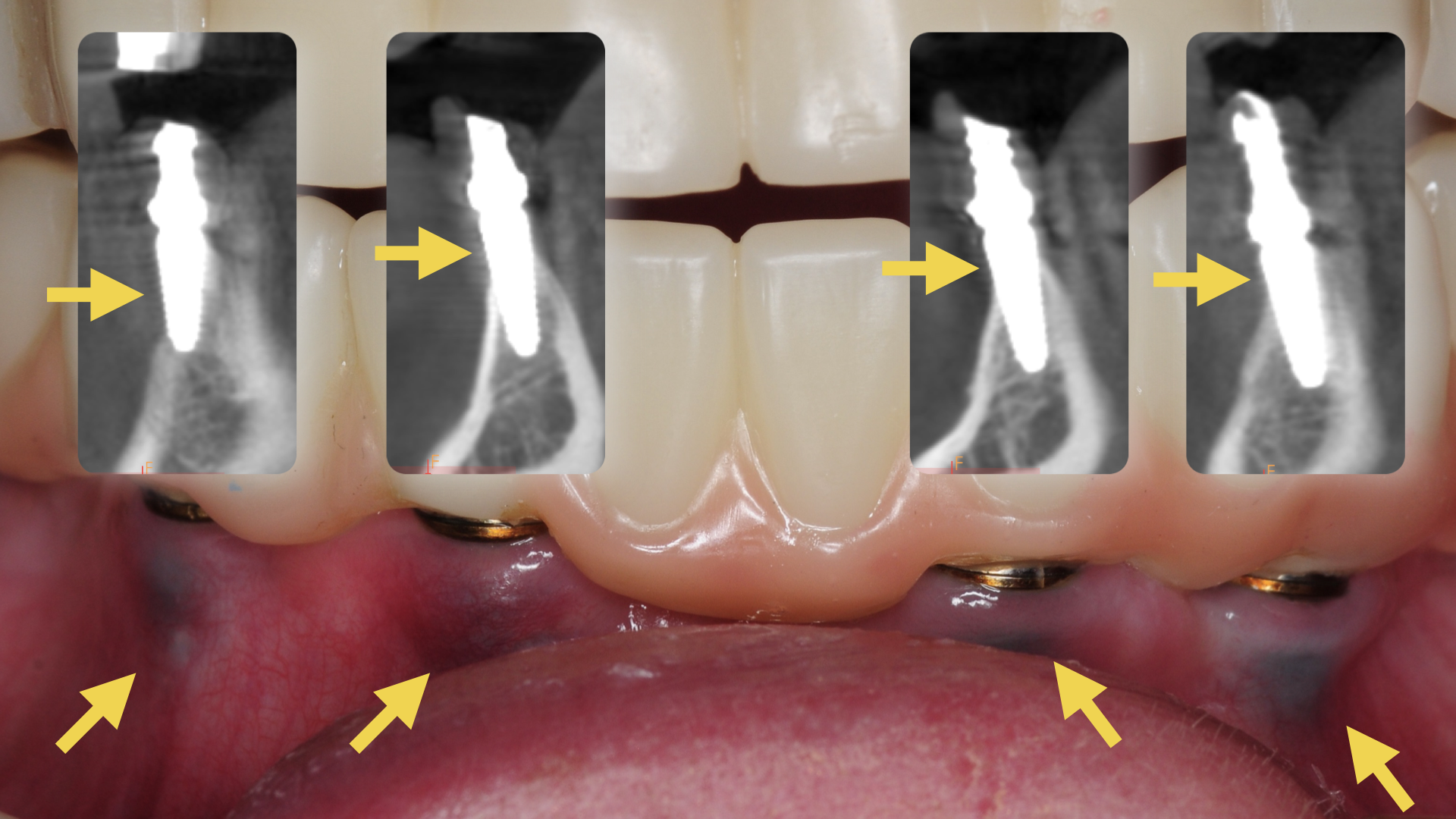Dental implants have revolutionized the field of dentistry, offering a reliable solution for replacing missing teeth. However, like any dental procedure, they require meticulous planning and execution to ensure long-term success and aesthetic appeal. One common issue that can arise with dental implants is the development of a grayish coloration around the gum tissue, which can detract from the overall appearance of the smile. In this blog post, we’ll explore the causes of this discoloration and discuss preventive measures and treatment options.

Patient presented with recently placed dental implants with immediate display of grayish discoloration and recession of gum tissue, caused by poor implant position and lack of adequate bone
Understanding the Causes: The grayish discoloration around dental implants can be attributed to several factors, with poor implant position, lack of bone support, and thin gum tissue being among the primary culprits. When an implant is improperly positioned or lacks adequate bone support, it can lead to recession of the gum tissue, exposing the underlying metal of the implant fixture. Additionally, thin gum tissue may not provide sufficient coverage over the implant, resulting in a translucent appearance that allows the metal color to show through.
Prevention: Preventing grayish discoloration around dental implants begins with careful treatment planning and execution. Adequate bone support is essential for the long-term stability of the implant and the health of the surrounding tissues. Additionally, precise positioning of the implant within the bone can help ensure optimal esthetic outcomes. For patients with thin gum tissue, measures such as soft tissue augmentation prior to implant placement may be recommended to enhance the thickness of the gum tissue and improve its ability to mask the underlying implant material.
Treatment Options: If grayish discoloration has already developed around a dental implant, there are several treatment options available to address the issue. One common approach is gum tissue grafting, where a small amount of tissue is harvested from another area of the mouth and transplanted to the site of the implant to increase the thickness of the gum tissue and reduce the visibility of the underlying metal. This can significantly improve the aesthetic appearance of the implant-supported restoration. Of course, this does not address the bone deficiency around the implant which can develop peri-implantitis and further destruction of bone and soft tissue.
In cases where the discoloration is severe or cannot be adequately addressed with soft tissue grafting, implant removal and revision therapy may be necessary. This involves removing the existing implant, augmenting the deficiency with bone grafting, and replacing it with a new dental implant that is positioned more optimally within the bone and covered by healthy gum tissue. While this approach may require additional time and expense, it can ultimately result in a more natural-looking and aesthetically pleasing outcome.
Conclusion: Grayish discoloration around dental implants can be a source of concern for patients and clinicians alike, but with proper prevention and treatment strategies, it can be effectively managed. By ensuring adequate bone support, precisely positioning the implant, and addressing any issues with thin gum tissue, clinicians can help minimize the risk of discoloration and achieve optimal esthetic results for their patients. For those already experiencing discoloration, options such as gum tissue grafting and implant revision therapy offer viable solutions to restore the natural beauty of the smile. As always, consulting with a qualified oral surgeon is essential for personalized treatment recommendations tailored to each individual’s unique needs and circumstances.
